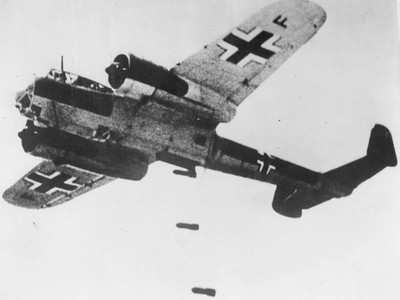Mon, May 27, 2013
Specialized Equipment Developed For The Effort
A team of restoration experts is currently hard at work preparing to salvage a unique World War II aircraft from the floor of the English Channel. Using cutting edge restoration techniques within a purpose-built polytunnel from First Tunnels, the team hopes to have the rare Dornier 17 ready for exhibition within two years.

The RAF Museum in Hendon is behind the ambitious project to raise the aircraft and end its watery exile. The project is made even more significant by the fact that this particular aircraft is the last of its kind, rendering it a valuable addition to the museum's collection and a thrilling historical exhibit for future display.
The Dornier 17 was central to the German war effort in its role as a Luftwaffe bomber used against the allies in the Battle of Britain. Now, the only surviving example of this iconic aircraft is being salvaged from beneath 50ft of water at Goodwin Sands off the coast of Kent. However, raising the aircraft is only the start of the long road to restoration. A team of specialists has devised a conservation program for the Dornier 17 that involves the use of chemicals engineered to rapidly stop corrosion.
According to a First tunnels news release, a group of experts at Imperial College London came up with the technique that will stabilize the metal components of the Dornier 17 after 70 years under water. An assortment of specialists have already been involved in the recovery operation to date, including the team at First Tunnels, who have constructed two large polytunnels at the museum's conservation center in Cosford, Shropshire where the chemical treatment will take place.
The process of spraying the aircraft with chemicals in a purpose-built polytunnel environment has enabled conservationists to cut the cost of the operation by giving them an economical alternative to the traditional method of immersing the parts in large and expensive containers. The initial stage of the restoration, which involves ending the negative effects of corrosion, will take around 18 months to complete.
(Dornier 17 image from file)
More News
Aero Linx: JAARS Nearly 1.5 billion people, using more than 5,500 languages, do not have a full Bible in their first language. Many of these people live in the most remote parts of>[...]
'Airplane Bounced Twice On The Grass Runway, Resulting In The Nose Wheel Separating From The Airplane...' Analysis: The pilot reported, “upon touchdown, the plane jumped back>[...]
"Burt is best known to the public for his historic designs of SpaceShipOne, Voyager, and GlobalFlyer, but for EAA members and aviation aficionados, his unique concepts began more t>[...]
"Polaris Dawn, the first of the program’s three human spaceflight missions, is targeted to launch to orbit no earlier than summer 2024. During the five-day mission, the crew >[...]
There Are SO Many Ways To Get YOUR Aero-News! It’s been a while since we have reminded everyone about all the ways we offer your daily dose of aviation news on-the-go...so he>[...]
 ANN's Daily Aero-Linx (05.04.24)
ANN's Daily Aero-Linx (05.04.24) NTSB Final Report: Quest Aircraft Co Inc Kodiak 100
NTSB Final Report: Quest Aircraft Co Inc Kodiak 100 Aero-News: Quote of the Day (05.04.24)
Aero-News: Quote of the Day (05.04.24) Aero-News: Quote of the Day (05.05.24)
Aero-News: Quote of the Day (05.05.24) Read/Watch/Listen... ANN Does It All
Read/Watch/Listen... ANN Does It All



